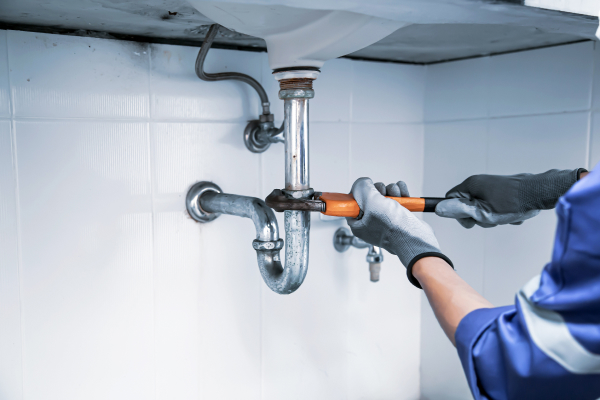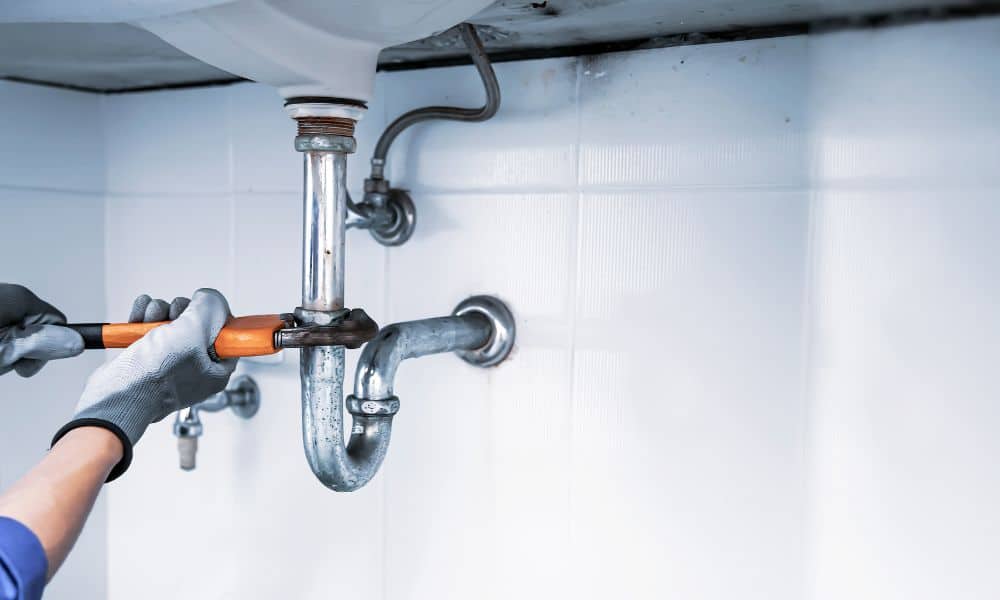Winter brings many beautiful sights, from snow-covered landscapes to frosted windowpanes. However, along with these picturesque scenes, cold weather can also cause some serious home maintenance issues—most notably, frozen pipes. When water in your home’s pipes freezes, it can lead to blockages, pipe bursts, and even extensive water damage. Understanding the importance of frozen pipe repairs and addressing the problem promptly can save homeowners from costly repairs and major inconveniences.
What Causes Pipes To Freeze?
Pipes freeze when temperatures drop below 32°F (0°C), especially in uninsulated areas of a home such as attics, basements, and crawl spaces. When the water inside the pipes freezes, it expands. Even if the pipe is composed of a sturdy material, the pressure might still cause it to crack or break.
While homeowners might think that water stops flowing in the event of a freeze, the opposite can occur once the pipe thaws. If the pipe has been damaged by the expanding ice, water can flood through the cracks, leading to significant water damage and property destruction. This scenario is why prompt repair is critical when dealing with frozen pipes.
Why Prompt Pipe Repair Is Crucial
Prevention Of Water Damage
A frozen pipe may seem like an inconvenience, but it can quickly turn into a disaster if left unattended. When frozen pipes burst, the water that was once contained within them has no place to go, and it will flood the surrounding area. This can result in soaked floors, damaged walls, ruined furniture, and even electrical hazards. The cost of repairing water damage can be astronomical compared to the relatively simple process of repairing a frozen pipe before it bursts.
Preserving Water Supply
If you experience a frozen pipe, it’s not just the potential for water damage that is concerning—your access to water is interrupted. Water is essential for daily activities such as cooking, cleaning, bathing, and drinking. A frozen pipe blocks water flow, which means your household may be without water for an extended period. Quick repairs ensure you restore your home’s water supply as soon as possible, preventing prolonged disruption.

Avoiding Expensive Pipe Replacement
If frozen pipes are ignored, the damage may extend beyond a simple repair. In some cases, the pipe may need to be completely replaced, particularly if a burst causes significant structural damage or weakens the entire plumbing system. Repairing or replacing sections of damaged pipes is far less costly than overhauling an entire plumbing network. By addressing frozen pipes promptly, you can mitigate the need for more extensive and expensive work.
Energy Efficiency
Frozen pipes are often an indicator that there is insufficient insulation around your plumbing system. If you allow pipes to freeze repeatedly, you’re likely dealing with cold drafts and inefficiencies in your home’s insulation. By addressing frozen pipes quickly and taking the necessary steps to insulate or protect them, you also improve your home’s overall energy efficiency. Lower heating costs and a cozier home are possible outcomes of this.
Health And Safety Concerns
Aside from the practical and economical issues, frozen pipes may be dangerous. If you don’t properly clean the standing water left in your home after a burst pipe, mold may emerge. Mold is not only unsightly but also poses serious health risks, particularly for individuals with respiratory issues or allergies. By fixing frozen pipes as soon as they occur, you can prevent the risk of mold and the health hazards that come with it.
Steps To Take If You Suspect Frozen Pipes
If you suspect that a pipe in your home is frozen, there are steps you can take immediately to mitigate damage:
- Turn Off The Water Supply: If you notice any unusual signs, such as slow water flow or complete water stoppage, shut off the water supply to prevent flooding once the pipes thaw.
- Open Faucets: Open your faucets slightly to relieve pressure within the pipe. This will also allow water to start flowing once the pipe begins to thaw.
- Thaw The Pipes: Use a hairdryer, heating pad, or portable heater to slowly warm the pipe. Avoid using open flames or high-heat devices as this can cause more damage.
- Call A Professional: If you are unsure about the extent of the damage or if you cannot locate the frozen pipe, it’s always best to contact a licensed plumber. They will have the tools and expertise to locate, thaw, and repair the pipe efficiently.
How To Prevent Frozen Pipes In The Future
When it comes to frozen pipes, prevention is essential. Here are some tips to help protect your pipes during the winter months:
- Insulate Pipes: In unheated locations like crawl spaces, attics, and basements, provide insulation around pipes. Pre-formed pipe insulation is available in most hardware stores and is easy to apply.
- Seal Cracks And Gaps: Seal any openings where cold air may enter your home, such as around windows, doors, and pipe penetrations in walls.
- Maintain Consistent Heat: Keep your thermostat at a consistent temperature, especially during the night and when you’re away from home. Allow heat to reach uninsulated areas of your home where pipes are located.
- Drain Outdoor Pipes: Disconnect and drain outdoor hoses, and shut off water to outdoor faucets. This prevents outdoor pipes from freezing and affecting the indoor plumbing system.
Conclusion
Frozen pipes are a common wintertime issue, but they don’t have to become a disaster. Prompt pipe repairs are vital in preventing water damage, maintaining access to water, avoiding costly repairs, and ensuring the health and safety of your home. By taking quick action at the first sign of a frozen pipe, you can go from frozen to flowing smoothly—and save yourself a lot of stress and expense in the process.

